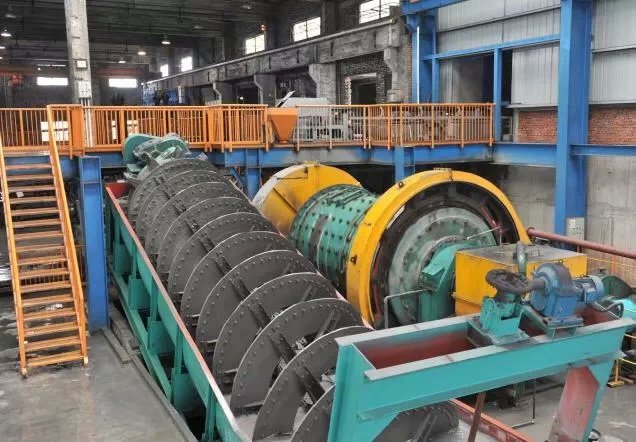Molybdenum Ore Beneficiation Process Technology

Molybdenite flotation processing plant
During overgrinding, the proportion of S-Mo surface increases and the floatability decreases. Although a certain amount of polar collectors such as xanthates are added at this time, it is beneficial to the recovery of molybdenite, but the new sludge produced by overgrinding will affect the flotation effect. Therefore, the separation of molybdenite should avoid and prevent over-grinding. In the production, it is necessary to adopt segmented grinding and multi-stage separation processes to gradually achieve monomer dissociation and ensure a high recovery rate of molybdenum concentrate. The crushing of molybdenum ore generally uses a three-stage one-closed-circuit process, and the final product size is 12-15 mm.
Usually use the ball mill or rod mill-ball in the ore milling process. But there are also some processing flows adapted to use a semi-self-grinding process. Flotation separation adopts priority flotation method. Rough separation produces coarse molybdenum concentrate, and rough sweeping tailings recover associated minerals or discard. The coarse molybdenum concentrate is reground in two or three stages, and the final molybdenum concentrate is obtained by four or five times of selection.
The flotation reagent of molybdenum ore uses non-polar oils as collectors, while adding foaming agents. The United States and Canada use the surfactant Syntex as an oil emulsifier. According to the nature of the ore, lime is used as a regulator, water glass is used as a gangue inhibitor, and sometimes cyanide or sulfide is added to inhibit other heavy metal minerals.

